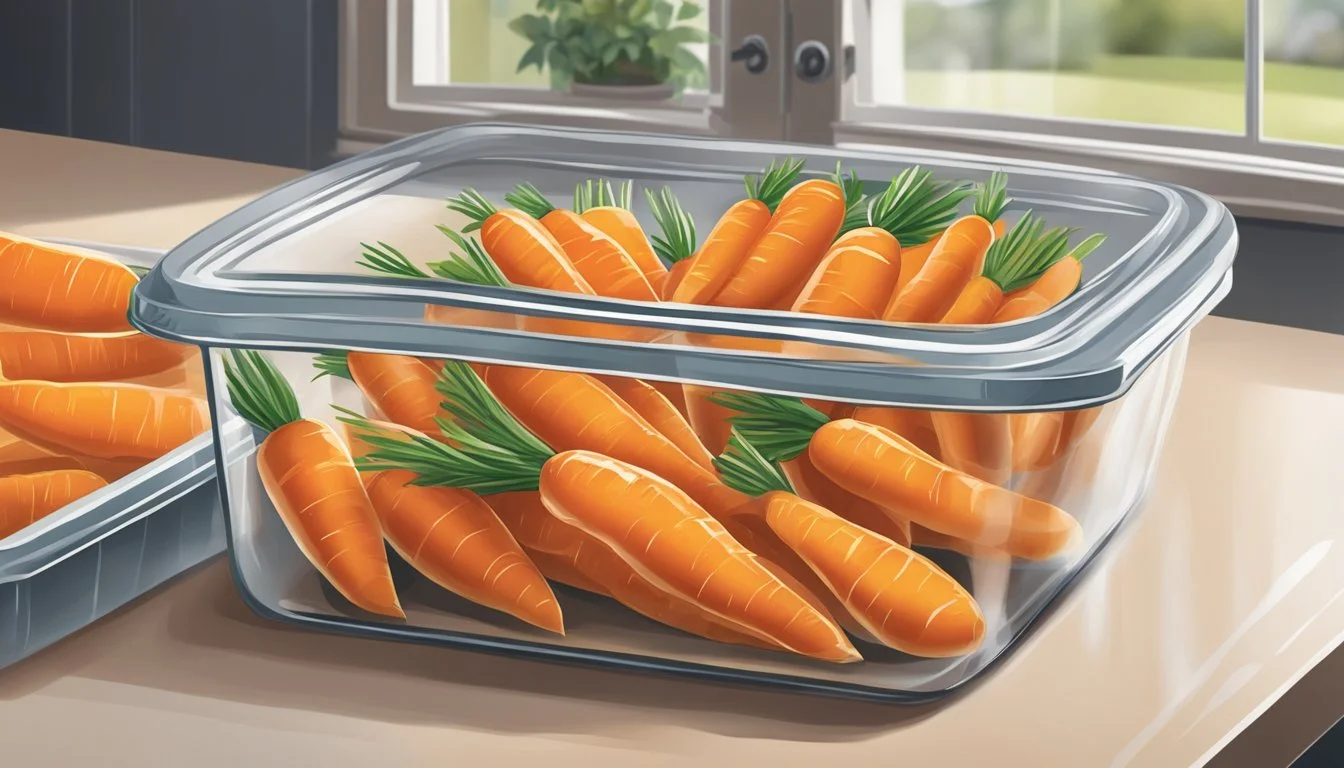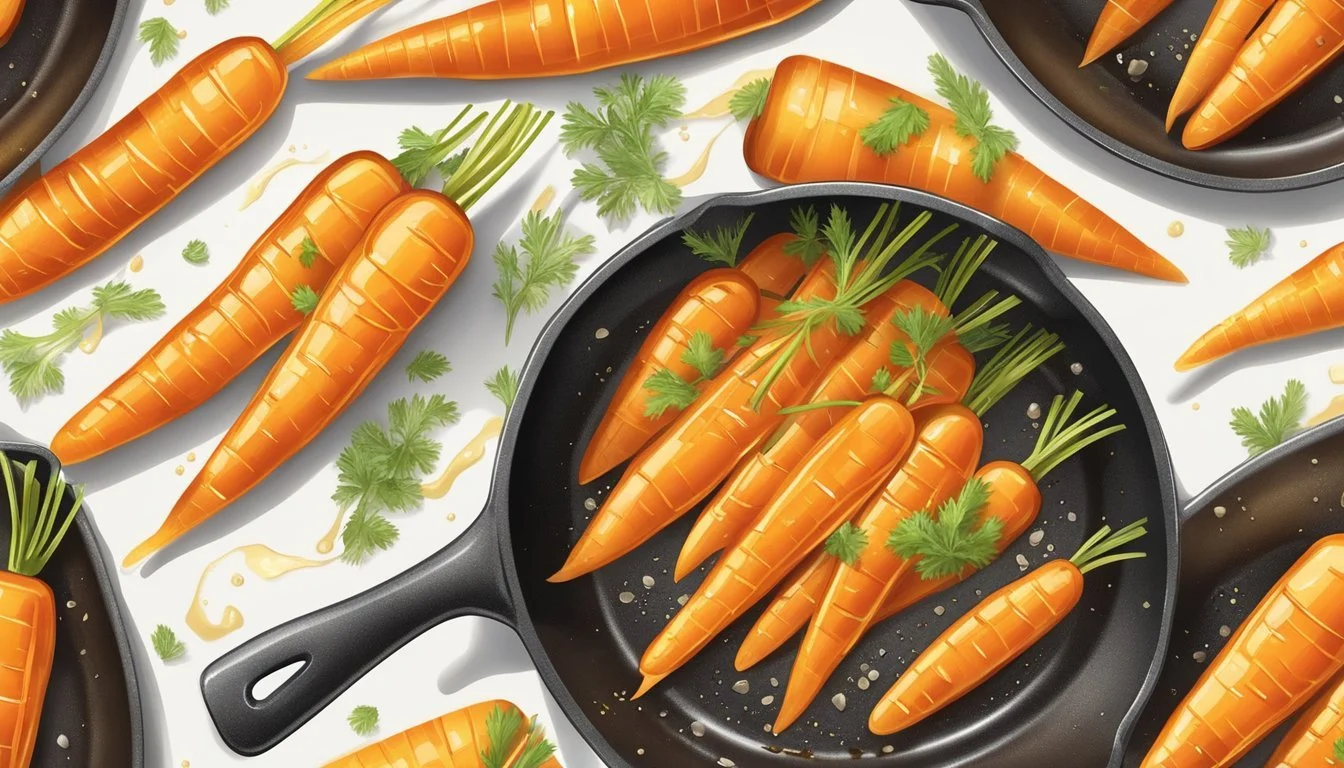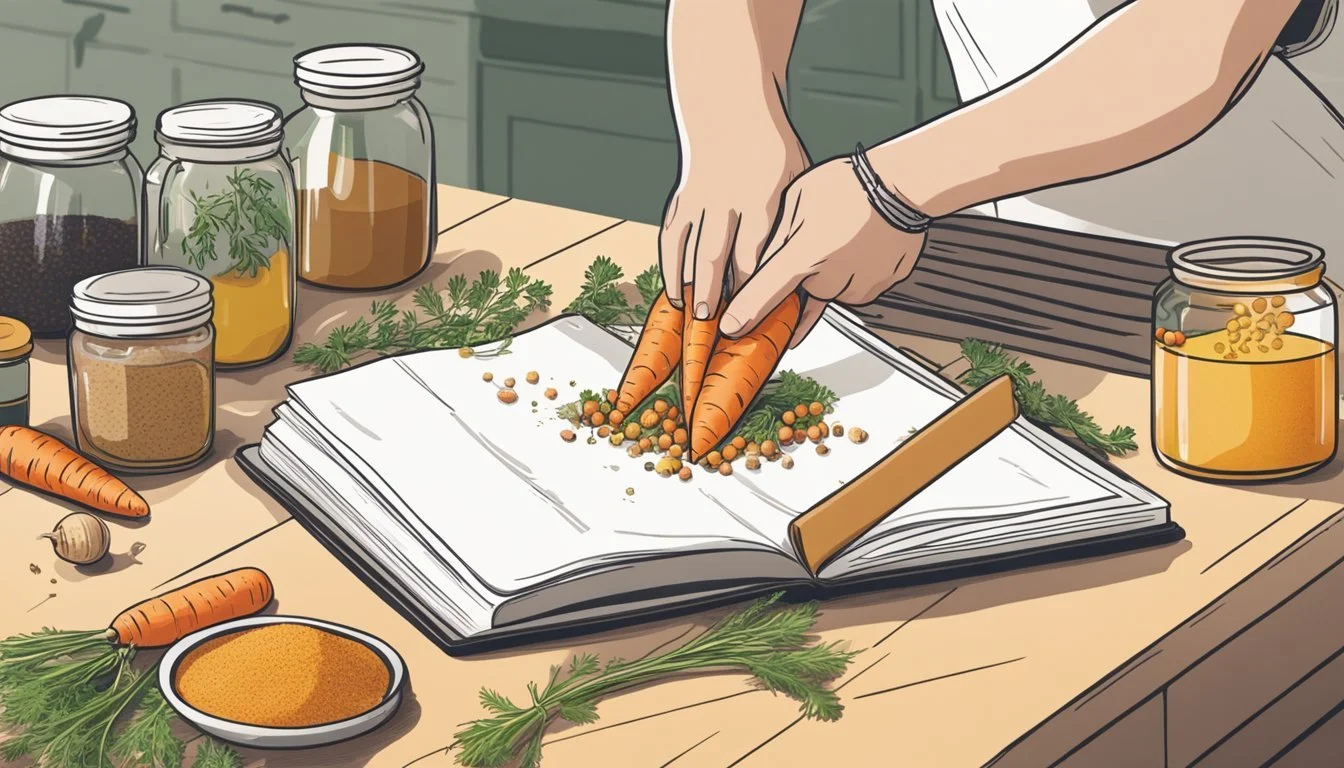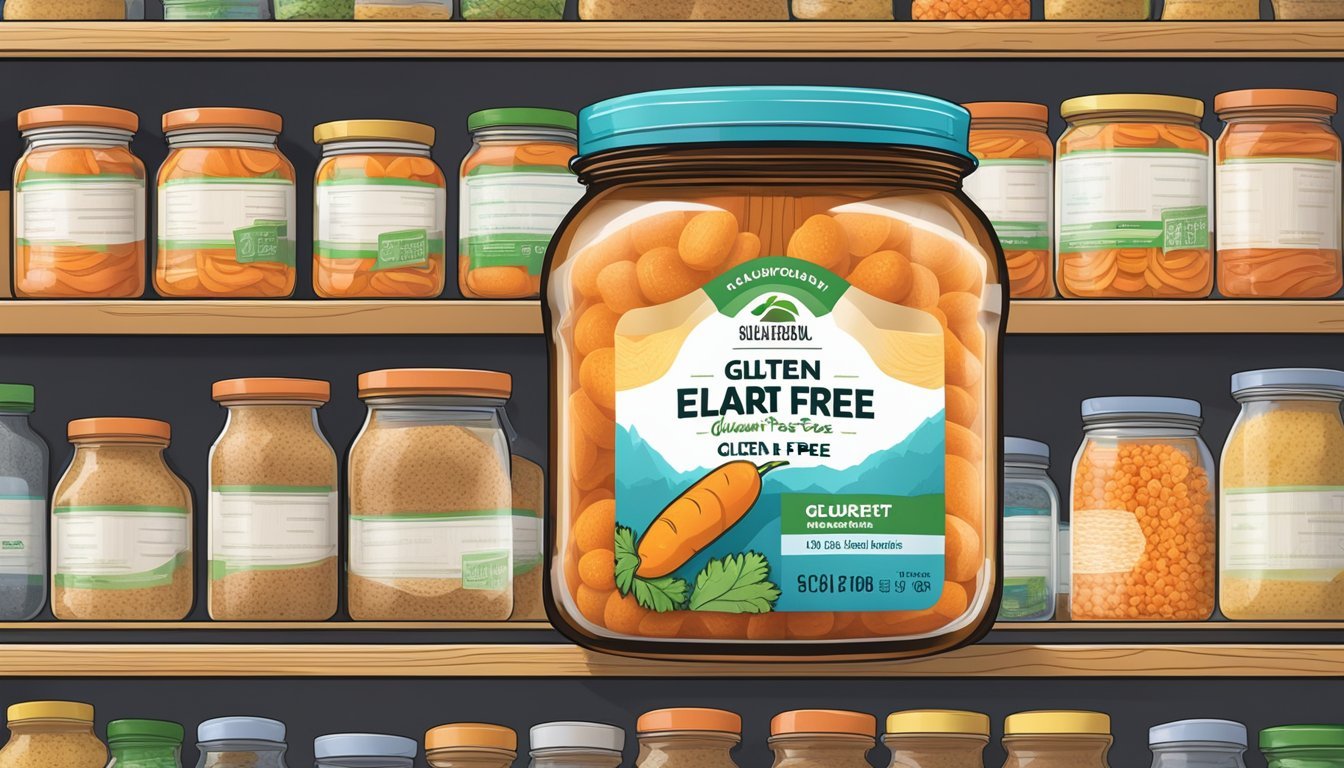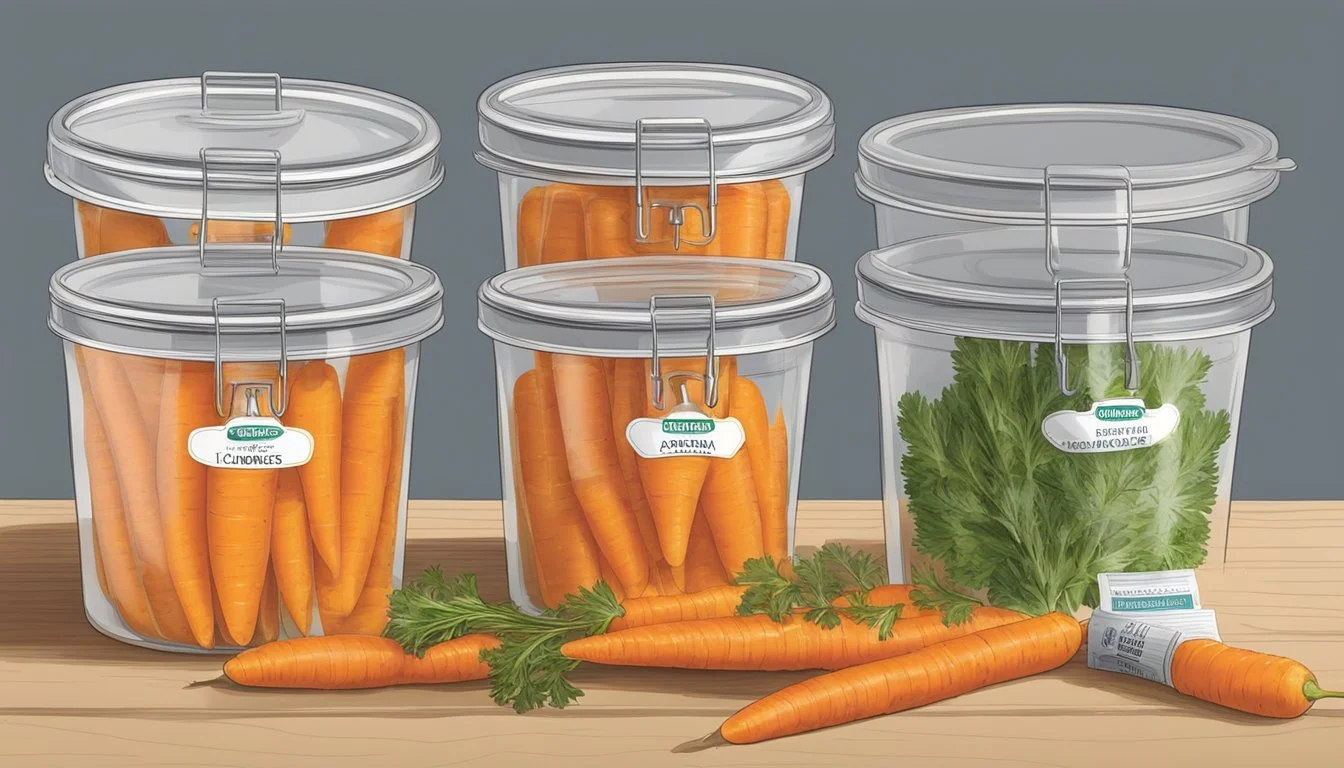How Long Do Gluten-Free Glazed Carrots Last?
Storage Tips and Shelf Life
Gluten-free glazed carrots are a delicious and versatile side dish that can complement any meal. These carrots, often prepared with ingredients like butter, brown sugar, and maple syrup, bring a sweet and savory flavor that many enjoy. They are easy to make and a favorite for holidays and family gatherings.
When it comes to storage, it's essential to know how long your gluten-free glazed carrots will last. Properly stored in an airtight container in the refrigerator, gluten-free glazed carrots can last up to 4-5 days. This makes them an excellent option for meal preparation and for those who enjoy having leftovers.
To ensure the best quality and taste, reheat the glazed carrots gently on the stovetop or in the microwave before serving. This will help maintain their texture and flavor, allowing you to enjoy their deliciousness even a few days after cooking.
Overview of Glazed Carrots
Glazed carrots serve as a flavorful side dish, combining the natural sweetness of carrots with various glazes like honey, maple syrup, or brown sugar. They are also gluten-free and can be adapted to meet different dietary needs.
What Are Glazed Carrots?
Glazed carrots are carrots cooked with a sweet glaze, often made from ingredients like honey, maple syrup, or brown sugar. Preparation involves partially cooking the carrots until they are crisp-tender, then adding a glaze typically made with butter or oil to achieve a glossy finish.
They are popular for their sweet taste and can be seasoned with additional spices or herbs. Glazed carrots complement many main dishes and are a common feature at holiday meals. Their preparation methods vary but usually include simmering and coating with the chosen sweeteners and fats.
Health Benefits
Carrots are packed with essential nutrients like fiber, vitamin A, and potassium. The fiber content aids digestion, while vitamin A is crucial for vision and immune function.
Using healthier glazes like honey or maple syrup can add antioxidants to the dish. Moreover, glazed carrots can be adapted to be vegan, dairy-free, and gluten-free to cater to various dietary needs.
This dish can also fit into low-carb and keto diets if sweeteners are carefully chosen. Whether for everyday meals or special occasions, glazed carrots offer both flavor and nutritional value.
Selecting Ingredients
When preparing gluten-free glazed carrots, choosing the right ingredients is essential. From selecting the best carrot varieties to picking suitable sweeteners, every choice impacts the final dish.
Carrot Varieties
Selecting the best carrots ensures a flavorful outcome. Common choices include baby carrots and rainbow carrots.
Baby carrots are convenient as they come pre-peeled and uniformly sized. They cook quickly and evenly, making them ideal for this recipe.
Rainbow carrots, known for their vibrant colors, not only add visual appeal but also offer slight variations in flavor and nutrients.
When purchasing root vegetables, look for firm, bright-colored carrots without cracks or soft spots. They should have a smooth, even surface. Peeling carrots is recommended, especially if using larger ones, as the skin can be tough.
Choosing the Right Sweeteners
Sweeteners play a vital role in achieving the perfect glaze. Popular choices are honey, maple syrup, and brown sugar.
Honey provides a rich, floral sweetness that complements carrots beautifully. It’s a natural, gluten-free option that many prefer.
Maple syrup adds a unique depth and subtle caramel notes, making it a versatile choice. Opt for pure maple syrup to avoid additives.
Brown sugar offers a classic flavor with molasses undertones, delivering a sweet and slightly complex taste. Combining it with spices like cinnamon enhances the glaze.
Selecting quality sweeteners ensures that the carrots are evenly coated and flavorful. Experimenting with these options allows for personalized touches to the dish.
Recipe Preparation
Creating gluten-free glazed carrots involves specific steps to ensure the perfect balance of flavor and texture. The process includes preparing the carrots and cooking them using methods that enhance their natural sweetness.
Pre-Preparation Steps
Prep Time: Approximately 10 minutes.
Before cooking, start by washing and peeling the carrots to remove any dirt and outer skin. Make sure to cut the ends off.
Next, diagonally slice the carrots into even pieces. This allows them to cook uniformly. If you prefer, you can also leave them whole for a different presentation.
Organize all ingredients such as maple syrup, honey, balsamic vinegar, and seasoning beforehand to streamline the cooking process.
Cooking Techniques
Cook Time: Varies between 20-45 minutes depending on the method.
On the Stove: Melt butter in a skillet over medium heat. Add the sliced carrots and cook until they are crisp-tender, about 8-10 minutes. Add the glaze ingredients and continue stirring until the carrots are well-coated.
In the Oven: Preheat to 425°F. Spread the sliced carrots in a single layer on a baking sheet. Drizzle with oil, then roast for about 20 minutes, flipping halfway to ensure caramelization.
For an alternative, place cut carrots in a casserole dish, add pats of butter and glaze ingredients, and bake covered at 350°F for 45 minutes, or until fork tender.
Cooking Process
To achieve the perfect gluten-free glazed carrots, it's essential to focus on creating a flavorful glaze and combining ingredients in a methodical way for a tender texture.
Creating the Glaze
The glaze forms the heart of this side dish and usually involves a mix of butter or vegan butter, honey or maple syrup, and additional seasonings.
Start by melting butter or vegan butter in a skillet over medium heat. Once melted, add a sweetener like honey or maple syrup along with optional ingredients such as brown sugar or water. Stir well to combine these ingredients. For added flavor, include aromatic elements like garlic and a pinch of salt and pepper. Fresh herbs, such as parsley, can be tossed in to amplify the dish's aroma.
Combining Ingredients
Begin with fresh, washed carrots. Cut them into 1-2 inch pieces or sticks for a more even cook. Pre-cook the carrots either by boiling them until tender-crisp or by directly roasting them in the oven with a drizzle of olive oil.
When the glaze mixture is ready, add the pre-cooked carrots to the skillet. Stir continuously to coat each piece thoroughly. Ensure the carrots are evenly distributed for maximum flavor absorption. After a few minutes of cooking in the glaze, the carrots should achieve a tender texture, ideal for serving immediately. Roasted versions can be transferred to a baking sheet and roasted for 20 minutes, stirring halfway through for even cooking.
Serving Suggestions
Gluten-free glazed carrots make an excellent side dish that pairs well with a variety of main courses. Enhancing them with thoughtful garnishing can elevate presentation and flavor.
Pairing with Main Dishes
Gluten-free glazed carrots complement numerous main dishes, particularly those enjoyed during festive occasions like Thanksgiving. Roast turkey or honey-baked ham pairs exceedingly well due to the sweet and savory contrasts. For a lighter option, consider pairing with grilled chicken breast seasoned with rosemary and thyme.
In vegetarian cuisine, combine these carrots with quinoa or wild rice pilaf. They also suit pan-seared salmon, where the glaze enhances the fish’s natural flavors. Use salt and pepper to adjust seasoning, creating a balanced taste profile.
Garnishing Tips
Enhance the appeal of gluten-free glazed carrots with the right garnishes. Fresh herbs like chopped parsley or rosemary add not only visual appeal but also a fresh flavor contrast. Sprinkling fresh thyme can introduce earthy notes, complementing the sweetness of the glaze.
For a more sophisticated touch, consider a light drizzle of honey or a twist of freshly ground black pepper before serving. These simple ingredients finish the dish beautifully and can adapt to various cuisines and dining occasions.
Nutritional Information
Glazed carrots are a delicious side dish that fits well into various dietary lifestyles, including vegan and gluten-free diets.
Calories: A serving size of glazed carrots (around 1 cup) typically contains about 201 calories. These calories come from the combination of carrots and glazes such as maple syrup, butter, and other ingredients used in different recipes.
Macronutrients: Carrots are primarily composed of carbohydrates. A 1-cup serving of glazed carrots may contain around 50 grams of carbohydrates, including natural sugars from both the carrots and the glaze. They also provide a modest amount of protein and fat.
Fiber: Carrots are a good source of dietary fiber, which is crucial for digestive health. A cup of glazed carrots can provide about 4-5 grams of fiber, contributing to your daily nutritional needs.
Vitamins and Minerals: Carrots are rich in important vitamins and minerals. They are particularly high in Vitamin A, with a serving providing more than 100% of the recommended daily intake. Other notable nutrients include Vitamin K, Vitamin C, and potassium.
Suitability: Glazed carrots can be easily adapted to fit gluten-free diets by ensuring that all ingredients, especially any additional seasonings or thickeners, are free from gluten. For those on a vegan diet, substitutes like coconut oil or margarine can replace butter.
Whether served warm or at room temperature, glazed carrots make a versatile and nutritionally balanced addition to meals. Their sweet and savory profile makes them appealing to both adults and children.
Customizing the Recipe
Customizing a gluten-free glazed carrot recipe allows you to explore various flavors and accommodate different dietary preferences. Experimenting with alternative sweeteners, seasonings, and additional ingredients can enhance the dish's taste and make it unique to your palate.
Alternative Sweeteners and Seasonings
Swapping out the typical sweeteners for new options offers exciting variations to the traditional recipe. Instead of honey or maple syrup, consider using agave nectar or coconut sugar for a different sweetness profile.
For additional complexity, you could try adding a pinch of cinnamon or nutmeg, creating a warm, comforting flavor. Balsamic vinegar and soy-free tamari can provide a tangy contrast that pairs well with the natural sweetness of the carrots. More spice can be introduced with cayenne pepper for a mild kick or smoked paprika for a deeper, smoky aroma.
Additional Ingredients for Flavor
Adding extra ingredients can further enhance the flavor profile of your glazed carrots. Fresh herbs like thyme or oregano can infuse the dish with aromatic freshness. Incorporating garlic or shallots adds a savory depth that balances the sweetness well.
For those who enjoy richer flavors, try adding crispy bacon pieces or toasted nuts like almonds or pecans. Extra virgin olive oil can replace butter for a vegan twist, providing a healthier alternative with a subtle fruitiness. Experimenting with small amounts of pomegranate juice or orange zest can also add a refreshing tartness.
By customizing the seasoning and ingredients, you can transform a simple side dish into a gourmet experience, catering perfectly to specific tastes and dietary needs.
Additional Tips
When preparing gluten-free glazed carrots, it's crucial to follow a few tips to ensure the best results.
Storage: Store glazed carrots in an airtight container in the refrigerator. They generally last for about 3 to 5 days.
Easy to Make: The recipe is straightforward and suitable for both beginner cooks and those with advanced skills. Minimal prep and cook time are required.
Prep Time: Carrots should be peeled and sliced before cooking. This usually takes about 5-10 minutes, depending on the amount and methods used.
Cook Time: Most recipes call for a cook time of around 15-25 minutes. The boiling and roasting times can vary slightly.
For Kids: Glazed carrots can be a kid-friendly side dish. If you have picky eaters, consider reducing the amount of garlic and spices to make the dish more appealing to them.
Instructions: Follow the recipe closely for best results. Ensure carrots are evenly coated with the glaze and roasted or cooked to your preferred tenderness.
Batch Cooking: Consider making a larger batch if you plan to use them for multiple meals. This can save time on busy weeknights.
Serving Suggestions: These carrots pair well with a variety of main dishes such as turkey, chicken, or beef. Reheat in the microwave or on the stovetop before serving.
Proper handling and storage are key to maintaining the quality and flavor of gluten-free glazed carrots. Employ these tips for a delightful, easy-to-make side dish that stands the test of time and remains a favorite in any kitchen.
Related Recipes
Exploring related recipes can add variety and complement your gluten-free glazed carrots. These recipes highlight other vegetable companions and seasonal variations to create delicious meals.
Vegetable Companions
Combining gluten-free glazed carrots with other vegetables can create a nutritionally diverse and flavorful plate. Consider pairing them with:
Roasted Brussels Sprouts: Their slight bitterness contrasts nicely with the sweet glaze of the carrots.
Parsnips: These root vegetables share a similar texture but offer a different flavor profile that can enhance the dish.
Rainbow Carrots: Not just visually appealing, these colorful carrots add subtle taste differences that diversify the flavor.
For a well-rounded meal, these vegetables can be roasted similarly to the carrots, making preparation straightforward, especially for holidays like Thanksgiving or Christmas.
Seasonal Variations
Adapting the recipe to fit different seasons ensures that your meals stay fresh and exciting.
Spring: Consider using fresh herbs like parsley or dill to enhance the flavor of glazed carrots. These herbs add a touch of freshness that matches the season.
Summer: Incorporate zucchini or bell peppers, which are abundant in the summer. These can be roasted alongside the carrots.
Fall: Pumpkin or butternut squash make great seasonal partners during fall, adding a sweet and hearty component.
Winter: Root vegetables such as turnips or beets provide comforting, warm flavors perfect for colder weather and holiday meals.
These variations help make the most of seasonally available produce while keeping the meals exciting and wholesome.

